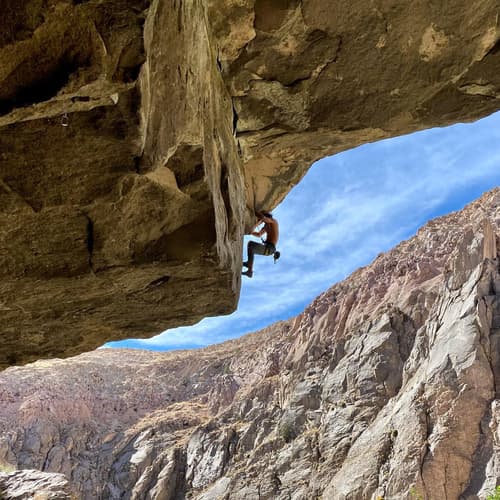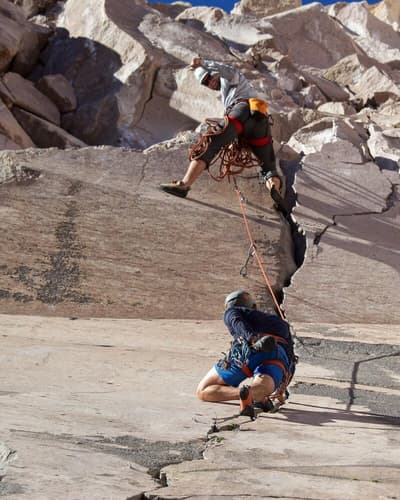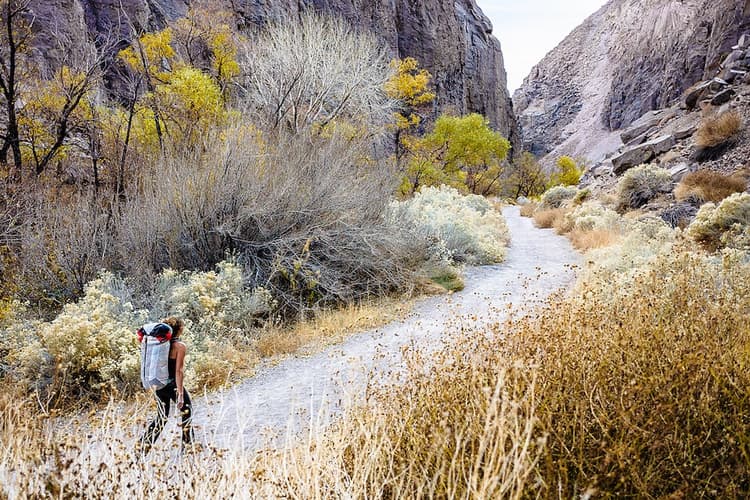Geology
Owens River Gorge is a dramatic 10-mile canyon along the upper Owens River in eastern California, exposing a multi-episode geologic history at the edge of Long Valley Caldera. A surprising fact is that the gorge records sequential openings and fillings—from Neogene incision through granodiorite, to a thick basalt fill, to glacial till and Bishop Tuff ignimbrite—that were later re-cut by renewed river action after caldera subsidence. USGS Long Valley Caldera Lake and Reincision Owens River Gorge citeturn1search1 USGS Long Valley Caldera Lake and Reincision Owens River Gorge (abstract page) citeturn1search0
Timeline
First Cut
The Owens River Gorge began as a Neogene incision that cut through a ridge of Triassic granodiorite, dropping the river to depths approaching its present floor. This initial valley set the stage for later episodes of filling and reexcavation. The bedrock ridge in question acted as a structural hinge around which later geologic layers were deposited and exposed. USGS report details the Neogene incision through granodiorite and subsequent events. citeturn1search1
Basalt Fill
Around 3.3 million years ago, a thick basaltic shield volcanic episode filled part of the gorge to about 200 m, effectively damming a 5-km reach and diverting the Owens River southward into Rock Creek. This created a secondary, deeper gorge downstream as the river carved through the same basement ridge on a separate track. The basalt fill records a major mid-Pleistocene interruption in river incision linked to magmatic activity near Long Valley. USGS synthesis of basaltic fill and diversion. citeturn1search1
Glacial Overlay
During MIS 22 (about 900–866 ka), a piedmont glacier deposited a thick sheet of Sherwin Till across the blocked reach, burying the earlier diversion on both sides of the gorge and showing that reexcavation had not yet occurred. This glacial episode adds a climatic signal to the gorge’s history, overlaying magmatic and river-formed features with ice-related sediments. The till preserves key clues about late-Pleistocene climate and landscape evolution in the Owens Valley. USGS MIS 22 glacial context in the Owens River area. citeturn1search1
Bishop Tuff
Around 767 ka, the Long Valley Caldera eruption produced the Bishop Tuff, a welded rhyolitic ignimbrite that blankets the landscape and directly rests on the older basalt and till around Owens Gorge. This ignimbrite makes the gorge’ s walls primarily Bishop Tuff, providing a clear record of a caldera-forming event that redefined regional drainage. The Bishop Tuff is a defining unit in the gorge, clearly illustrating caldera-scale volcanism. USGS ignimbrite context and Bishop Tuff relationship. citeturn1search1
Caldera Collapse
Caldera subsidence at Long Valley (767 ka) created a steep-walled depression and reoriented drainages, reversing the Owens River’s flow westward into the caldera. This tectonic reorganization set the stage for the later reestablishment of Owens River Gorge as a principal drainage conduit within the caldera system. The sequence underscores how catastrophic volcanism and tectonics can reshape river paths on a regional scale. USGS overview of caldera collapse and drainage reversal. citeturn1search1
Reincision Start
After roughly 600,000 years of sedimentation in a caldera lake, incision renewed through the gorge-filling ignimbrite reestablishing the Owens River Gorge as the present-day conduit, with the gorge walls still rimmed by Bishop Tuff. This reincision marks the completion of a long, multi-episode reorganization of flow within the caldera landscape and the Owen River system. The current gorge thus records the culmination of a complex caldera evolution that started with Neogene incision. USGS description of incisional history and reintegration. citeturn1search1
Notable Formations
Triassic Granodiorite
The earliest bedrock unit in the Owens Gorge corridor is a Triassic granodiorite ridge that the river initially cut through during Neogene time, establishing the deepest part of the present-day floor. This ridge provided the structural framework for later overprinting by volcanic and Quaternary sediments. As the gorge evolved, the granodiorite remained as a master faulted block beneath later deposits, helping to define the canyon’s geometry. USGS description of the initial granodiorite ridge and incision. citeturn1search1
Basaltic Shield
A thick basaltic lava shield, emplaced around 3.3 Ma, filled part of the gorge to roughly 200 m and dammed a portion of the river, forcing flow into Rock Creek and resulting in a second, deeper gorge downstream. The basalt is preserved at the gorge’s rim and floor, illustrating how magmatic activity can reconfigure drainage before later hydroclastic and climatic events. This unit interacts directly with surrounding granodiorite and later ignimbrite. USGS basalt fill description. citeturn1search1
Sherwin Till
MIS 22 glacial episodes deposited the Sherwin Till across the gorge, draping basalt and granodiorite on both sides of the pathway, and indicating a climatically active phase that temporarily preserved the diverted course before incisions reestablished the river. Till layers capture the advance and retreat of Piedmont glaciers in the eastern Sierra and testify to dynamic surface processes shaping the canyon. USGS MIS 22 Sherwin Till context. citeturn1search1
Bishop Tuff
The Bishop Tuff is a welded rhyolite ignimbrite that blankets the landscape around Owens Gorge, resting directly on basalt and till. Erupted during the Long Valley Caldera event around 767 ka, it records a major volcanic episode that overprinted earlier units and set the stage for later incision patterns within the caldera. Columnar jointing and the scale of the ignimbrite are key visual hallmarks of this formation. USGS Bishop Tuff context. citeturn1search1
Geology Today
Today Owens River Gorge sits as a dramatic canyon cut into 767-ka Bishop Tuff along the eastern Sierra, exposing a cross-section of Neogene to Pleistocene geology. Since 1991, LADWP has released engineered flows to rewater the lower gorge, rebuild riparian habitat, and restore a brown trout fishery while maintaining hydroelectric power. Public access is periodically restricted during high-flow events or dam-safety work, as recent notices illustrate. The upper gorge remains a renowned rock climbing destination, with thousands of routes accessible when flows permit. LADWP Gorge Rewatering Project citeturn2search1turn2search0turn0search2
In Conclusion
Owens River Gorge is geologically distinctive for preserving a linked record of river incision through granodiorite, basalt damming, glacial overlays, and the caldera-wide Bishop Tuff, all reworked by Long Valley’s dynamic tectonics.
All content was written by our AI and may contain a few mistakes. We may earn commissions on some links. Last updated: Sat Nov 15, 2025, 6:06 AM





